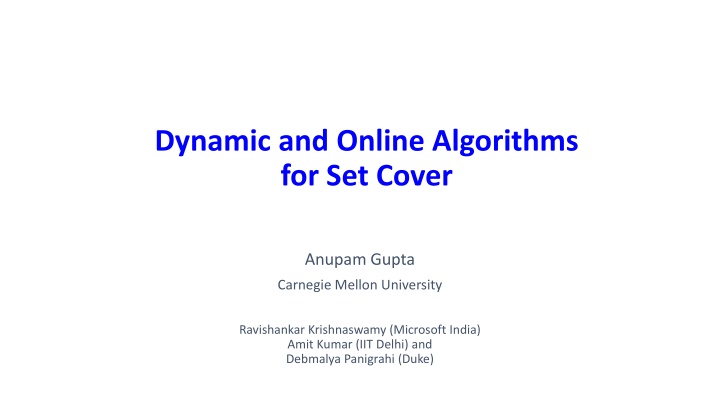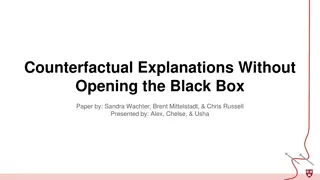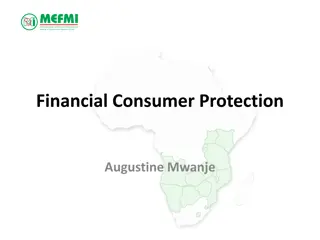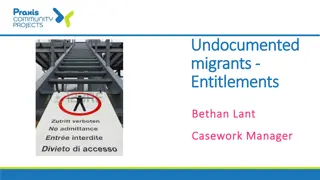
Online Algorithms for Set Cover: Dynamic and Competitive Analysis
Explore the world of dynamic and online algorithms for set cover, maintaining solutions for current inputs while ensuring comparability with offline algorithms. Discover insights into competitive analysis, cost minimization, and dynamic graph algorithms in this comprehensive study by experts from Carnegie Mellon University, Microsoft India, IIT Delhi, and Duke University.
Download Presentation

Please find below an Image/Link to download the presentation.
The content on the website is provided AS IS for your information and personal use only. It may not be sold, licensed, or shared on other websites without obtaining consent from the author. If you encounter any issues during the download, it is possible that the publisher has removed the file from their server.
You are allowed to download the files provided on this website for personal or commercial use, subject to the condition that they are used lawfully. All files are the property of their respective owners.
The content on the website is provided AS IS for your information and personal use only. It may not be sold, licensed, or shared on other websites without obtaining consent from the author.
E N D
Presentation Transcript
Dynamic and Online Algorithms for Set Cover Anupam Gupta Carnegie Mellon University Ravishankar Krishnaswamy (Microsoft India) Amit Kumar (IIT Delhi) and Debmalya Panigrahi (Duke)
online algorithms and competitive analysis At any time ?, maintain a solution for the current input past decisions are irrevocable solution should be comparable to the best offline algorithm which knows the input till time ?. Competitive ratio of an on-line algorithm on input ?1,?2, ,??, sup ? optimal solution cost for ?1, ,?? cost of solution produced at time ?
online set cover ?5 ?4 ?3 ?2 ?1 Given collection of ? sets over ? elements At time ?, new element ?? arrives and reveals which sets it belongs to Want: At any time ?, maintain set cover on revealed elements Goal: Minimize cost of set cover. Theorem: cost(algorithm) O(log m log ?) OPT(?1, ,??) Matching lower bound on deterministic algos. Matching hardness for poly-time online algos. [Alon Awerbuch Azar Buchbinder Naor 05] [Feige and Korman 08]
(dynamic) online algorithms At any time ?, maintain a solution for the current input past decisions are irrevocable solution should be comparable to the best offline algorithm which knows the input till time ?. Relax this requirement. Still compare to clairvoyant OPT. Measure number of changes ( recourse ) per arrival - e.g., at most O(1) changes per arrival (worst-case) - or, at most t changes over first t arrivals (amortized) Competitive ratio of an on-line algorithm on input ?1,?2, ,??, sup ? optimal solution cost for ?1, ,?? a.k.a. dynamic (graph) algorithms: traditionally measure the update time instead of #changes, we measure recourse. traditionally focused on (exact) graph algorithms, now for appox.algos too. cost of solution produced at time ?
the model, formally at each time t, either an element ?? arrives (and tells us which sets it belongs to) or an existing element departs (and no longer needs to be covered) ?? = set of active elements at time t ???? = optimal set cover for ?? (elements added but not deleted) Want: algorithm that maintains a feasible set cover ?? at all times competitive ratio: cost(??) / cost(????) (amortized) recourse:1 ? ?| ?? ?? 1 | (amortized) update time.
our results (recourse) Classical Online model: competitive ratio ?(log?log?), tight in most respects ?5 ?4 ?3 ?2 ?1 Dynamic set cover: Theorem 1. Algorithm that is ?(log?) competitive, with ? 1 recourse (amortized). Theorem 2. Algorithm that is ?(?) competitive (randomized), with ? 1 recourse (amortized). ? is the frequency = maximum number of sets containing an element e.g. vertex cover has ? = 2. The results extend to showing ?(log??) and ?(??) competitiveness.
our results (update time) Classical Online model: competitive ratio ?(log?log?), tight in most respects ?5 ?4 ?3 ?2 ?1 Dynamic set cover: Theorem 1b. Algorithm that is ?(log?) competitive, with ? ?log?update time (amortized). Theorem 2b. Algorithm that is ?(?3) competitive (randomized), with ? ?2update time (amortized). Corollary: a deterministic ?(1)-approximation for dynamic (weighted) vertex cover with ? 1update time. weighted: 2 + ? -approximation with ?(? 2log?)-update time [Bhattacharya Henzinger Italiano] unweighted: maximal matchings with ?(1) update time similar results in concurrent and independent work Prior work [Solomon] [Bhattacharya Chakrabarty Henzinger]
our results (recourse) Classical Online model: competitive ratio ?(log?log?), tight in most respects ?5 ?4 ?3 ?2 ?1 Dynamic set cover: Theorem 1. Algorithm that is ?(log?) competitive, with ? 1 recourse (amortized). Today: Measure recourse. Assume unit cost sets. Get O(log n) competitive with O(log n) recourse.
offline: the greedy algorithm Think of any solution as picking some sets assigning every element to some picked set (who is responsible for that element). Greedy: Iteratively pick set S with most yet-uncovered elements, assign them to S (1 + ln n)-approx. very robust: if current-best set covers ? uncovered elements, pick some set covering (?) elements lose only ?(1) factor.
the online algorithm density = 3 density = 2 density = 2 density = 1 Universe of current points
the online algorithm density = 3 density = 2 density = 2 density = 1 ?4 ?7 ?1 ?2 ?5 ?3 ?8 ?6
the online algorithm ?6 density = 1 ?4 ?7 ?3 ?8 density = 2 ?1 ?2 ?5 density [3,4] density [5,8]
the online algorithm ?6 density = 1 ?4 ?7 ?3 ?8 density = 2 ?1 ?2 ?5 density [3,4] density [5,8] Unstable set S: set that contains (2? 1,2?] elements, all currently being covered at densities 2? 1. E.g., suppose some set contains ?3,?6 and ?8. Then it is unstable. Lemma: no unstable sets solution is almost greedy solution is O(log n)-approximate.
the online algorithm ?3 ?6 ?9 ?9 ?6 density = 1 ?4 ?7 ?3 ?8 density = 2 ?1 ?2 ?5 density [3,4] density [5,8] Suppose ?9 arrives. Cover it with any set containing it. Now green set is unstable. So add it in, and assign ?3,?6,?9 to it. Clean up, resettle sets at the right level.
overview of the analysis Invariant: element at level 2? has 2(log? ?) tokens When a new element arrives and not covered by current sets, pick any set that covers it, add it with density 1 Start each element with 2log? tokens If some unstable set exists, add it to the correct level, assign those elements to it. Elements moving down lose 2 tokens use 1 to pay for new set May cause other sets to lose elements, become lighter. They float up to the correct level. Sets moving up lose of their elements use their other token to pay for rising up* Cause other sets to become unstable, etc. Claim: system stabilizes. Also, O(log n) changes per arrival, amortized. *minor cheating here.
a quick word about update time algorithms Classical Online model: competitive ratio ?(log?log?), tight in most respects ?5 ?4 ?3 ?2 ?1 Dynamic set cover: Theorem 2b. Algorithm that is ?(?3) competitive (randomized), with ? ?2update time (amortized). Corollary: a deterministic ?(1)-approximation for dynamic (weighted) vertex cover with ? 1 update time. sets = vertices edges = elements
dynamic vertex cover algorithms sets = vertices sit at various integer levels level(element/edge e) = highest level of set containing it 4 dual(e) = 2 ?????(?) Every vertex should be (approx.) feasible for dual 1 ? ? ? ?(?) ,?? ? 0 So move vertices up/down as needed to satisfy this (approximately). [Bhattacharya Henzinger Italiano, ]
new component of our analysis Analysis also uses tokens. When element (edge) arrives/departs give O(?) tokens to each of its ? sets. 4 When vertex moves down, gives O(?) tokens to neighbors at lower levels. Asymmetric When vertex moves up, gives O(1) tokens to neighbors at lower levels. 1 0 Show that no set spends more than it receives .
so in summary dynamically maintain basic approximation algorithms alternate view: for combinatorial optimization problems online, allowing bounded recourse can improve the competitive ratio qualitatively. Give ?(min(log?,?)) competitive algorithms with O(1) changes per timestep (amortized) Give ?(min(log?,?3)) competitive algorithms with ?(?log?) + ? ?2 update time (amortized) Q: Do we need amortization? From the online perspective, no. Can maintain ?(log?) competitive solution with O(1) changes per timestep. But need exponential time. Q: Maintain ? 1 competitive fractional set cover solution with O(1) recourse? thanks!






















